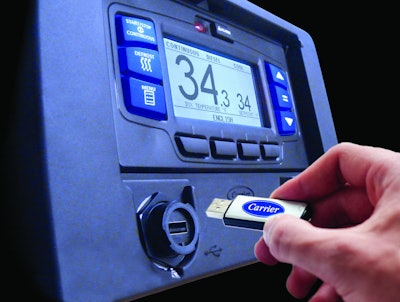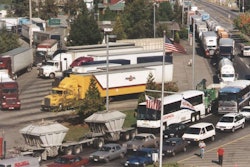
Carrier Transicold on Wednesday, March 30, introduced a new control system called APX for one of its transport refrigeration units that features distributed electronics for increased reliability and simpler troubleshooting. Dave Kiefer, director of marketing and product management, said the system’s goal was to replace the standard control box, which can be hard to troubleshoot, with “a distributed system of sealed components.”
Kiefer said the basic system will consist of three modules: a power control module near the battery, a display module on the outside of the box and a main module, resulting in “shorter wire runs, fewer connectors and a more efficient wiring harness that is 40 percent lighter than the standard harness.” The components will be housed in watertight, sealed enclosures.
“Users will be able to add modules later, so today’s equipment won’t be obsolete tomorrow,” Kiefer said. The modules will be “daisy-chained” together, meaning the system can be expanded and modified in an unlimited number of ways. The system’s Virtual Tech diagnostic software will run continuously. A red LED in place of the normal green means a module has failed and should be replaced; all a technician has to do is insert a new module to confirm the problem with the old one, and the repair will be complete.
The display also has been improved to provide an illuminated screen with a dashboard-like display with most of the common readouts such as temperature setting and box temperature. Several dedicated backlit buttons for functions such as continuous run or on-off operation are designed to simplify operation. Operation will in some ways resemble that of accessing a common ATM; technicians will be able to display up to five lines of operating information simultaneously for quicker evaluation of a unit’s condition.
A fleet will be able to customize driver access to various functions to “keep it simple for drivers and make operation mistake-proof,” said Kiefer. The system already has a number of applications, all developed by a Carrier subsidiary. It will include a USB port to share information with jump drives so trip data can be downloaded; programming uploads also are available. The system will be available as an option, initially on the X2 unit only.








